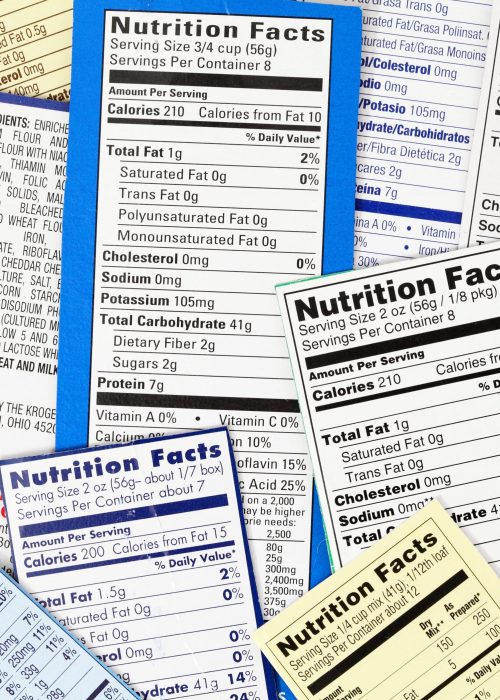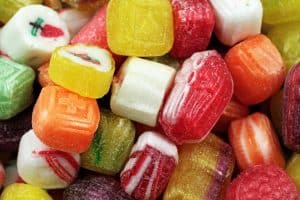Articles on Polyols
Learning to live a healthier lifestyle is easy when you change one small thing at a time. Learn and find tips to start the change today!
Learn moreHydrogenated starch hydrolysates (HSH), including hydrogenated glucose syrups, maltitol syrups, and sorbitol syrups, are a family of pleasant-tasting bulk sweeteners used in a variety of products. They are exceptionally well suited for sugar-free candies because they do not crystallize. They blend well with flavors and are synergistic with low-calorie sweeteners.
HSH serve a number of functional roles, including use as bulk sweeteners, viscosity or bodying agents, humectants, crystallization modifiers, cryoprotectants and rehydration aids. They also can serve as sugar-free carriers for flavors, colors and enzymes. HSH were developed by a Swedish company in the 1960’s and have been used by the food industry for many years, especially in confectionery products.

HSH are produced by the partial hydrolysis of corn, wheat or potato starch and subsequent hydrogenation of the hydrolysate at high temperature under pressure. The end product is an ingredient composed of sorbitol, maltitol and higher hydrogenated saccharides (maltitriitol and others). By varying the conditions and extent of hydrolysis, the relative occurrence of various mono-, di-, oligo- and polymeric hydrogenated saccharides in the resulting product can be obtained. A wide range of polyols (also known as sugar alcohols) that can satisfy varied requirements with respect to different levels of sweetness, viscosity and humectancy can, therefore, be produced.
The term “hydrogenated starch hydrolysate” can correctly be applied to any polyol produced by the hydrogenation of the saccharide products of starch hydrolysis. In practice, however, certain polyols such as sorbitol, mannitol and maltitol are referred to by their common chemical names. “Hydrogenated starch hydrolysate” is more commonly used to describe the broad group of polyols that contain substantial quantities of hydrogenated oligo- and polysaccharides in addition to any monomeric or dimeric polyols (sorbitol, mannitol or maltitol, respectively).
HSH are outstanding humectants which do not crystallize, enabling the production of sugar-free food and confections with the same cooking and handling systems used to produce sugar candies. These products are used extensively in confections, baked goods, a broad range of other foods, dentifrices and mouthwashes.
HSH are nutritive sweeteners that provide 40 to 90 percent of the sweetness of sugar. Being polyols, HSH are not sugars and are used to provide sweetness, texture and bulk to a variety of sugarless products. Unlike sugars, HSH are not readily fermented by oral bacteria and are used to formulate sugarless products that do not promote dental caries.
HSH are also more slowly absorbed in the digestive tract. A portion of HSH may be enzymatically hydrolyzed in the body to sorbitol, maltitol and glucose, however, this process is slow. Therefore, HSH have a reduced glycemic potential relative to glucose for individuals with and without diabetes. Since HSH are more slowly absorbed, a portion of HSH in a food reaches the lower digestive tract where it is metabolized by naturally occurring colonic bacteria. This results in a reduction in the available calories and permits its use as a reduced calorie alternative to sugar.
Polyglycitol is approved for use in a number of food categories in the European Union. Generally Recognized as Safe (GRAS) affirmation petitions for HSH have been accepted for filing by the Food and Drug Administration. This allows manufacturers to produce and sell foods containing these sweeteners in the United States.
HSH, although less sweet than sucrose, blend well with other sweeteners and flavors and can mask unpleasant off-flavors such as bitter notes. HSH products are synergistic with low-calorie sweeteners. Applications for HSH include confectioneries, baked goods, icings and frozen desserts. In baked goods, for example, HSH products not only offer sweetness but also moisture control, texture improvement, crystallization inhibition, less browning (allowing less chance of burning), stability improvement with extended shelf life and flavor improvement.
Absorption of HSH by the body is slow, allowing a portion of HSH to reach the large intestine where metabolism yields fewer calories. Therefore, unlike sugar that contributes 4 calories per gram, the European Union has provided a Nutritional Labeling Directive stating that polyols, including HSH, have a caloric value of 2.4 calories per gram.
HSH may, therefore, be of use in formulating reduced calorie food products.
The lower caloric value of HSH and other polyols is recognized in other countries. For example, in the US a calorie value of 3 calories per gram is allowed for HSH.
Polyols, including HSH, are resistant to metabolism by oral bacteria that break down sugars and starches to release acids that may lead to cavities or erode tooth enamel. They are, therefore, non-cariogenic and safe for teeth. The usefulness of polyols as alternatives to sugars and as a part of a comprehensive program including proper dental hygiene has been recognized by the American Dental Association.
Control of blood glucose, lipids and weight are the three major goals in diabetes management today. HSH absorption is slow and incomplete. Therefore, the rise in blood glucose and insulin response associated with the ingestion of glucose is significantly reduced when HSH are used as alternative sweeteners. The reduced caloric value (75 percent, or less, that of sugar) of HSH is consistent with the objective of weight control. Products in which HSH replace sugar may, therefore, be of use providing a wider variety of reduced calorie and sugar-free choices to people with diabetes.
Recognizing that diabetes is complex and requirements for its management may vary between individuals, the usefulness of HSH should be discussed between individuals and their physicians. Foods sweetened with HSH products may contain other ingredients that also contribute calories and other nutrients. These must be considered in meal planning.
The safety of HSH products and their components is substantiated by a broad range of safety studies in man and animals, including long term feeding, multigeneration reproduction and teratology studies.
The Joint Food and Agriculture Organization/World Health Organization Expert Committee on Food Additives (JECFA) has reviewed the safety information and concluded that maltitol syrups are safe. JECFA established an acceptable daily intake (ADI) for “maltitol syrup” of “not specified,” meaning no limits are placed on its use. An ADI of “not specified” is the safest category in which JECFA can place a food ingredient. JECFA’s decisions are often adopted by many small countries that do not have their own agencies to review food additive safety. In 1984, the Scientific Committee for Food of the European Union evaluated maltitol syrups and concluded it was not necessary to set an ADI for maltitol syrups.
In the United States, Generally Recognized as Safe (GRAS) petitions for HSH products have been accepted for filing. Once a GRAS affirmation petition has been accepted for filing, food manufacturers may use the ingredient. Products from the HSH family are approved in many other countries, including Canada, Japan and Australia.

Sugar replacers (polyols) have been used in foods around the world for many years. An Expert Committee of the World Health Organization has carefully reviewed them and concluded that they are safe for human consumption. In the U.S., the Food and Drug Administration (FDA) classifies some as Generally Recognized as Safe (GRAS) and others are approved food additives.
Learning to live a healthier lifestyle is easy when you change one small thing at a time. Learn and find tips to start the change today!
Learn moreWe’ve got the answers to your frequently asked questions about polyols.
Learn moreThese unique sweeteners taste like sugar but have special advantages.
Learn more